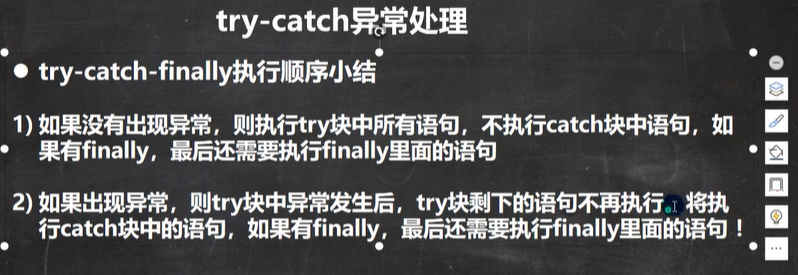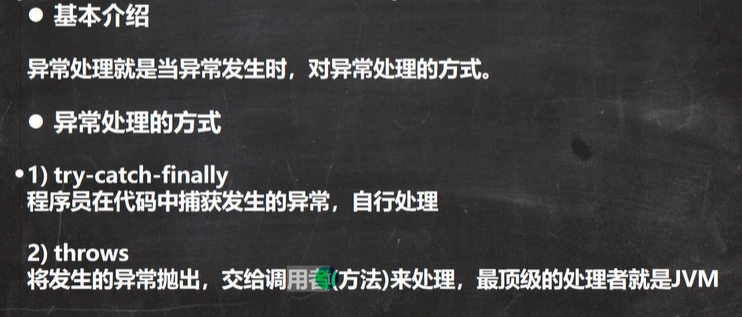
一、try-catch-finnally
1)try-catch-finally
ctrl + alt + t
程序员在代码中捕获发生的异常,自行处理。
1 | try{ |
2)throws
将发生的异常抛出,交给调用者(方法)来处理,最顶级的处理者就是 JVM。
2)注意点
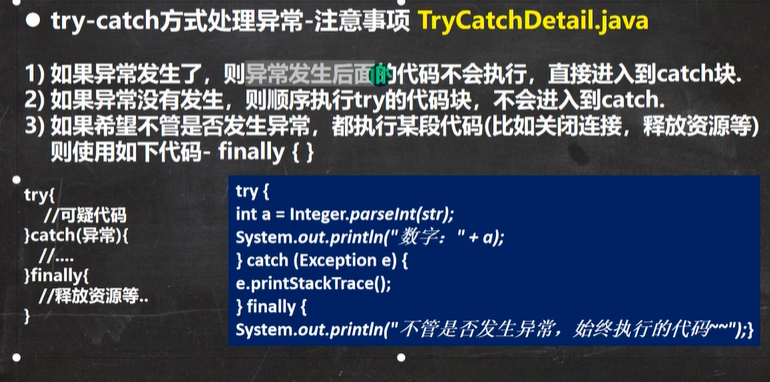
如果异常发生了那,异常后面的代码不会执行,直接进入catch快。
1
2
3
4
5
6
7
8
9
10
11
12
13
14
15
16
17
18
19
20public class exception2 {
public static void main(String[] args) {
try{
String str="13a";
int i =Integer.parseInt(str);
System.out.println("前面发生后面这个不会执行了");
}catch (Exception e){
System.out.println("出现异常进入catch"+e.getMessage());
}
System.out.println("代码继续执行trycatch后面的代码");
}
}finally {
System.out.println("finaly被执行了");
}
=====
出现异常进入catchFor input string: "13a"
finaly被执行了
代码继续执行trycatch后面的代码- 可以由多个 catch 语句,捕获不同的异常。 但要求==父类异常在后,子类异常在前==。比如(EXCEPTION 在后,nullpointexception 在前。) 。如果报错,==只会匹配一个 catch==
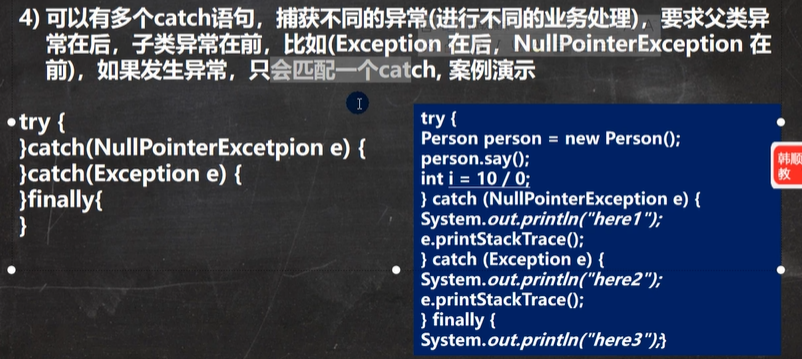

不管结果怎么样,最终都要执行 finally 的方法

案例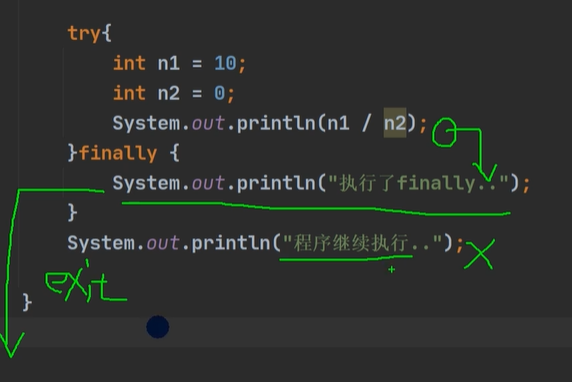
这里出现异常没有进行 catch ,则直接到 finally ,然后就退出该方法了,不会继续执行后面的代码。
二、throw
如果程序抛出了异常,而没有进行异常捕获处理,那默认就是 throw 抛出这个异常。
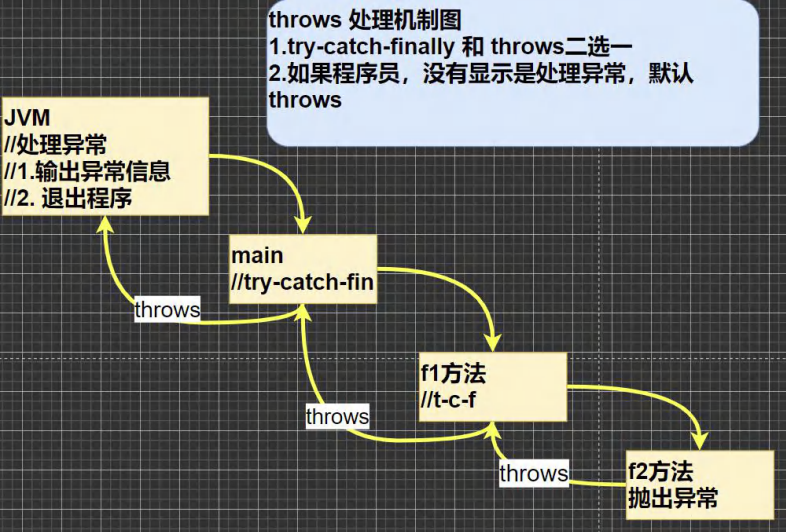
三、案例分析
1.try/catch finally
1.1
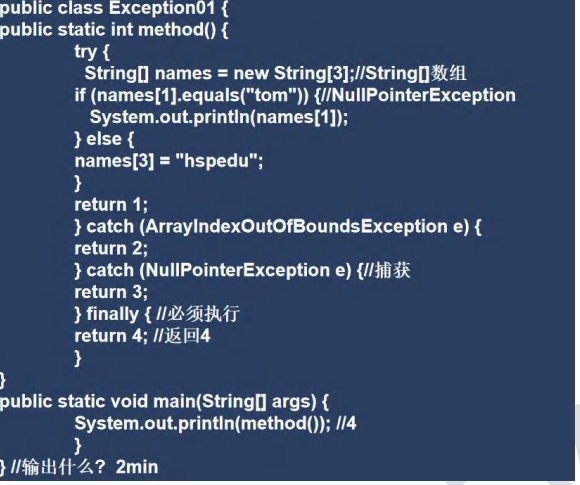
finally 优先级很高,必须执行!!!!。
1.2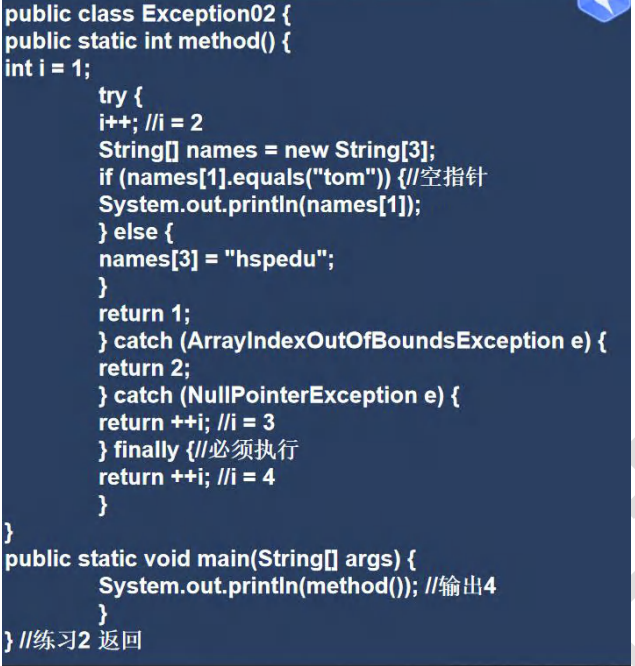
return i++; ,i++会执行,但因为必须执行 finally ,所以先不能执行 return。
四、总结
